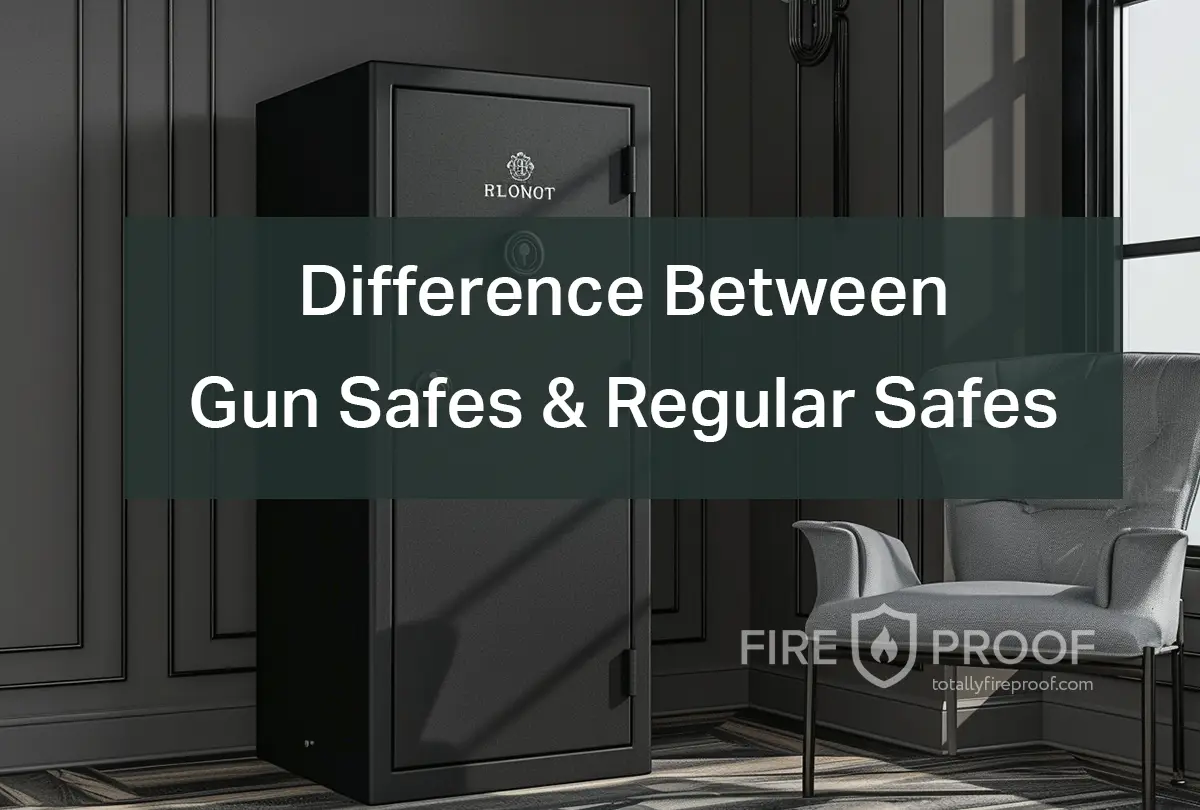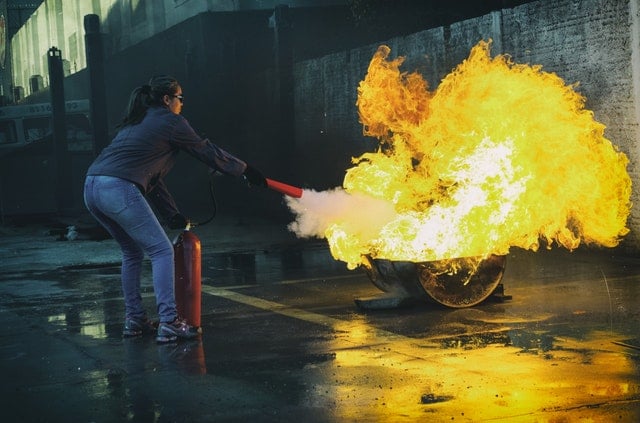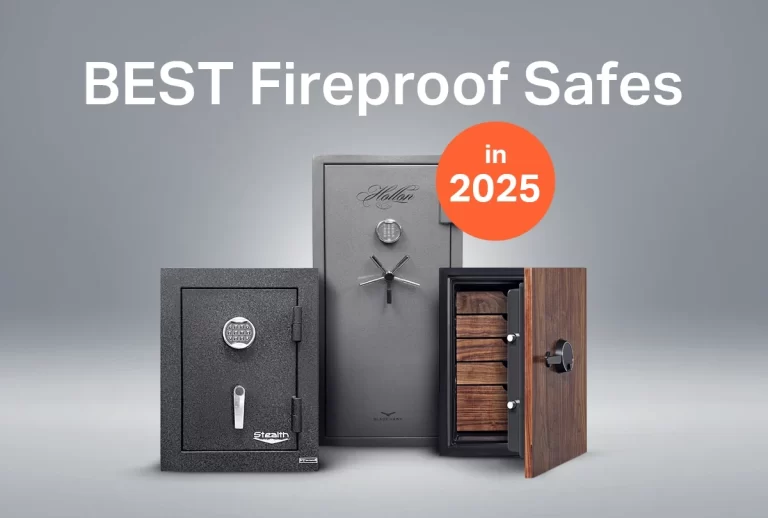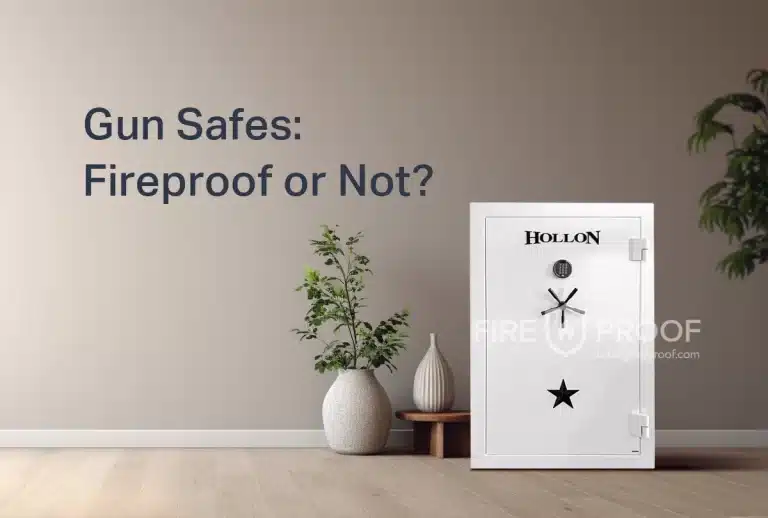Difference Between Gun Safes And Regular Safes
What’s the difference between a gun safe and a regular (home) safe?
Gun safes are designed specifically for firearms. They have special racks for guns, offer fast access, and are larger. Usually, they cost more.
Regular home safes are designed to protect things like papers, cash and jewelry. They are often smaller and less expensive. Compared to gun safes they are more likely to be fire and water resistant.
Which one should you choose? Here’s a comparison of gun safes and regular safes to help you decide.
Gun Safes vs. Regular Safes: Key Differences
Gun safes are designed specifically for storing firearms and ammunition. They often come with features that prioritize quick access to their contents, robust security against unauthorized use, and gun storage organization designs. You can easily fit firearms in storage racks and have everything on it’s designated place. Safes for guns are usually larger in size.
Regular safes, on the other hand, focus on protecting valuables like documents, jewelry, and electronic devices from theft, fire, or water damage. They are usually smaller in size. The construction materials, locking mechanisms, and internal design vary significantly depending on the type of home safe you are looking at.
Here’s a table explaining the main differences between gun safes and regular safes:
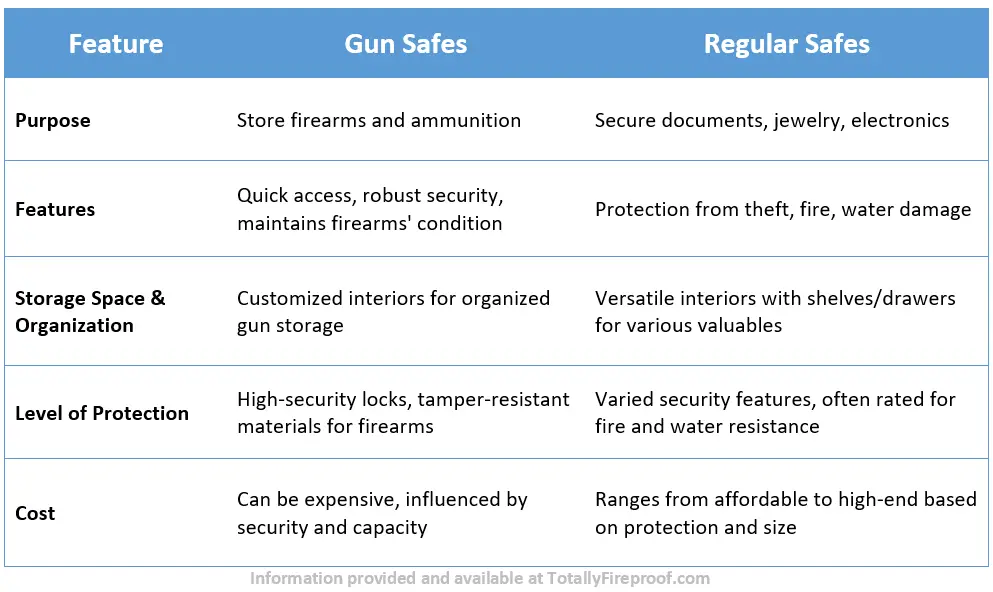
Types of Gun Safes
Gun safes is not a universal singular design. Because there are so many different firearms there are also various types of gun safes to to suit them all. Let’s look at each type and explain what they offer.
Handgun Safes
Perfect for storing one or two handguns. They’re compact, making them easy to place in a bedside drawer or under a desk. Ideal for quick access in emergencies.
Long Gun Safes
Built to store rifles and shotguns, these safes are tall and often come with racks or slots for organized storage. They’re best for avid hunters or collectors with multiple long guns.
Multi-Gun Safes
For those with a collection of firearms, multi-gun safes offer spacious storage. They come with adjustable shelves and racks to fit various gun sizes and types.
Biometric Safes
These safes offer high-tech security with fingerprint scanners. They allow for quick, keyless access, ensuring that only authorized users can open the safe.
Vehicle Safes
Compact and secure, vehicle safes are designed to fit in cars or trucks, providing a safe way to transport firearms while preventing unauthorized access.
Portable Gun Safes
Lightweight and easy to carry, portable gun safes are ideal for those who need to secure their firearm while traveling. Despite their size, they provide decent protection against unauthorized access.
Fireproof Gun Safes
Designed to withstand extreme heat, fireproof gun safes protect your firearms and ammunition during a fire. They’re essential for minimizing damage in disaster scenarios.
Why Choose Regular Safes Over Gun Safes
Regular safes offer their own set of advantages:
- Versatility: Regular safes are designed to protect a wide range of items, from documents and jewelry to digital media and cash. Their interior can often be customized with shelves and drawers.
- Fire and Water Protection: Many regular safes are built to withstand not just theft, but also fire and water damage. This ensures your valuables stay safe even in disasters.
- Cost-Effective: Depending on the level of security and protection needed, regular safes can be more affordable than specialized gun safes, making them an attractive option for general use.
Can You Store Guns In Regular A Safe?
While it’s possible to use regular safes for storing guns, a dedicated gun safe is a better choice. It offers better organization, necessary security and is made to comply with legal demands for firearm storage:
- Size and Organization: Regular safes may not be designed for firearms, meaning they might lack the specific racks or supports needed for proper gun storage. This could lead to inefficient use of space or potential damage to the firearms.
- Security Features: While regular safes offer security, they might not have the specialized locks or tamper-proof features that gun safes provide. This could impact the level of protection for stored firearms.
- Compliance with Laws: Using a regular safe for gun storage might not meet specific legal requirements for firearm safety in some jurisdictions. It’s important to check local laws to ensure compliance.
Must-Have Gun Safe Features
When selecting a gun safe check if it has these features:
- Robust Locking Mechanisms: High-quality locks, such as biometric, electronic, or combination locks, provide secure access to firearms while preventing unauthorized entry.
- Sturdy Construction: The safe should be made of heavy-duty steel with reinforced doors and walls to resist tampering and break-ins.
- Interior Organization: Adjustable shelving, gun racks, and compartments help keep firearms and accessories neatly organized and easily accessible.
- Mounting Options: The ability to securely anchor your safe to the floor or wall can deter thieves from attempting to remove the entire safe.
- Fire and Water Resistance: A gun safe should protect its contents against environmental threats. Look for safes with certified fire resistance ratings and water-resistant seals.
- Security Ratings: Safes with a high security rating from a reputable certification body offer validated protection against various attack methods.
Conclusion
Choosing the right safe comes down to knowing what you need to protect. Gun safes and regular safes serve different purposes, each with unique features that cater to specific storage requirements.
Gun safes are usually more expensive, bigger in size and have dedicated firearms storage organization. Regular safes are typically smaller, cost less and offer more versatile security measures that focus on the valuables like documents, cash and jewelry.
If you own firearms, a gun safe is your a better choice obviously. On the other hand, for general valuables like documents and jewelry, a regular safe offers versatile protection against theft and environmental damages.

